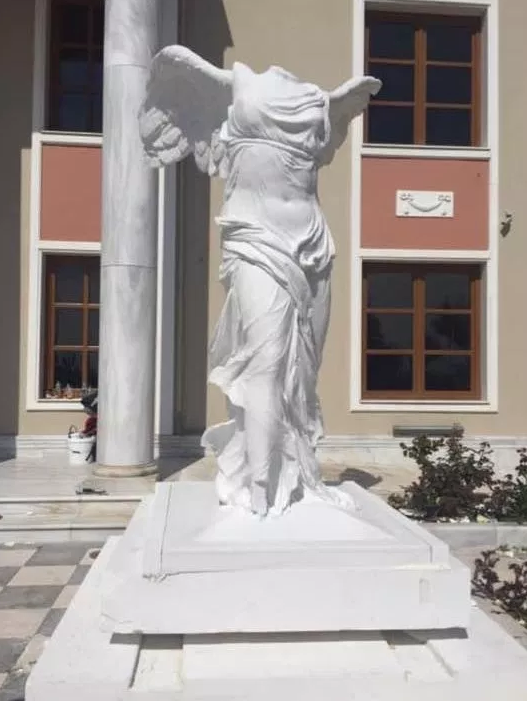An exact replica of the iconic marble sculpture of Nike of Samothrace, one of the most spectacular exhibits in the Museum of the Louvre, has been
temporarily placed in the city of Alexandroupolis, NE Greece, before it can be transferred to its home island in the North Aegean Sea.
The replica has been placed in the court yard of Alexandroupolis Prefecture, awaiting for its base to be constructed outside the Archaeological Museum of Palaiochora on the island of Samothrace.
Following fruitless negotiations with Louvre for the return of the statue to Greece, vice-governor of Evros region Dimitris Petrovic told state Athens-Macedonian News Agency (ANA), two exact 3D replicas were requested from the Louvre.
“The idea to ask the Louvre Museum for a 3D digitised archive in order to construct a faithful copy was born in 2012 when we visited the museum of Samothrace,” Petrovic said, and the regional councillors found out that the copy of Nike showcased in the museum was of very poor quality.
The request to Louvre for the archives to construct two exact certified copies of the statue “was accepted on conditions.”
“The copy of the Nike of Samothrace was constructed with marble from Thassos island at a factory in Drama and its dimensions are exactly the same as the original’s; it weighs 6.5 tonnes,” he said. It was funded by Elias Kyriakides, owner of a large marble company who had the appropriate robotics to sculpt the replica.
It took three months to outline the sculpting points on a marble block weighing 18 tonnes, he said. “It then required another three months and two craftsmen from the Marble School of Tinos marble craftsmen to sculpt out the details, completing the beautiful copy in the summer of 2018.”
The local marble is reportedly particularly durable to open-air weather conditions.
The Winged Victory of Samothrace, also known as the Nike of Samothrace, is a marble Hellenistic sculpture of Nike (the Greek goddess of victory), that was created in about the 2nd century BC. Since 1884, it has been prominently displayed at the Louvre Musuem since 1884 and is one of the most celebrated sculptures in the world. It is described as “the greatest masterpiece of Hellenistic sculpture.”
However, the temporary placement in Alexandroupolis has sparked reactions, with residents and local authorities of Samotrace to wonder why the delay before the Nike can return home.












